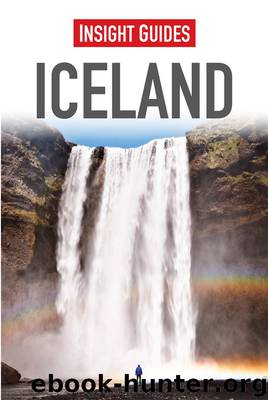Insight Guides: Iceland by Insight Guides

Author:Insight Guides
Language: eng
Format: epub
Tags: Travel, Iceland
Publisher: APA
Published: 2014-06-19T04:00:00+00:00
One of the worst culprits is Grímsvötn. Located under Vatnajökull, it is the most active of Iceland’s many volcanic craters, and capable of inflicting impressive damage through its jökulhlaups (glacial bursts). The last eruption under the ice began on 21 May 2011, with a plume of volcanic ash rising to over 20km (65,000ft) in altitude. Some European air traffic was disrupted, and the whole of Kirkjubæjarklaustur was coated in a thick grey dust, but the eruption had fizzled out by 28 May.
The area got off lightly compared to the chaos caused by the September 1996 eruption of a nearby fissure, Gjálp, which filled the Grímsvötn caldera with meltwater over the course of two months. On the morning of 5 November, the long-awaited glacial burst began. Large parts of Skeiðarársandur disappeared under black and muddy floodwater, electric cables across the sands were destroyed, as was a 12km (7-mile) stretch of the Ring Road itself. The bridges over the Sæluhúsakvísl and Gígja rivers were swept away, and the 906-metre (2,980ft)-long bridge over the River Skeiðará was badly damaged. South of the road the flood carried immense amounts of sediment to the sea and the beach stretched 800 metres (2,600ft) further out into the ocean than it had before the flood. Two days later, when the burst came to an end, a million tons of ice had broken away from the margin of Skeiðarárjökull glacier, which dominates the view on the north side of the road. Damage to the road, bridges and power lines was estimated at 25 million euros.
Download
This site does not store any files on its server. We only index and link to content provided by other sites. Please contact the content providers to delete copyright contents if any and email us, we'll remove relevant links or contents immediately.
Spell It Out by David Crystal(35991)
Underground: A Human History of the Worlds Beneath Our Feet by Will Hunt(11980)
A Year in the Merde by Stephen Clarke(5262)
Venice by Jan Morris(2496)
Claridge's: The Cookbook by Nail Martyn & Erickson Meredith(2317)
My Paris Kitchen: Recipes and Stories by Lebovitz David(2168)
A TIME OF GIFTS by Patrick Leigh Fermor(2134)
The Plantagenets by Dan Jones(1971)
Welcome to the Goddamn Ice Cube by Blair Braverman(1933)
Top 10 Prague (EYEWITNESS TOP 10 TRAVEL GUIDES) by DK(1899)
Bang Poland: How To Make Love With Polish Girls In Poland by Roosh V(1895)
The Isle of Mull by Terry Marsh(1865)
The Finnish Way by Katja Pantzar(1851)
From Russia with Lunch by David Smiedt(1849)
A TIME TO KEEP SILENCE by Patrick Leigh Fermor(1810)
Rick Steves London 2018 by Rick Steves & Gene Openshaw(1793)
A Taste of Paris by David Downie(1780)
Merde in Europe by Stephen Clarke(1701)
Insight Guides Experience Tokyo by Insight Guides(1688)
